Wireless devices crowd out cosmic radio signals and more
Cell phones and other Wi-Fi devices can interfere with interstellar — and Earth-based — research
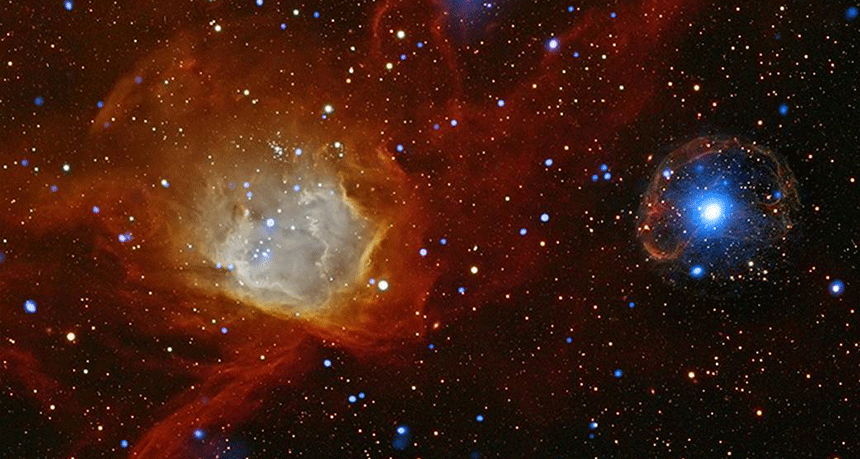
This young pulsar — or spinning, ultradense star (large white dot in center right) — is not far outside our Milky Way. Some details of such celestial bodies are not visible. They come only from radio transmissions, which can be masked by Wi-Fi signals on Earth.
NASA/CXC/Univ. of Potsdam/L. Oskinova et al.
Cell phones, self-driving cars and virtual-reality headsets have something in common. They all send radio waves through the air. Our bodies can’t feel these invisible signals, says Scott Ransom. “We can’t hear them. We can’t see them. But all our devices are using them,” notes this astronomer who works at the National Radio Astronomy Observatory. It’s in Charlottesville, Va.
Radio waves are a type of electromagnetic radiation. This spectrum of energy also includes the light we can see, along with X-rays and ultraviolet light. But radio waves have much lower energy than these other signals. That means radio signals travel through the air as very long, stretched-out waves.
These waves can carry many types of information. They bring music from a broadcast station into your car. They carry text messages from a friend’s phone through a series of cell towers, and finally to your screen. A self-driving car sends out radio waves to help it scan for obstacles.
Often, these signals zip past each other with no problem. They’re like cars traveling on separate highway lanes, explains Paul Tilghman. He’s an engineer who specializes in wireless communication. Tilghman works for DARPA, the Defense Advanced Research Projects Agency, in Arlington, Va. That “highway” is the radio spectrum, he says. Each lane is a different radio wavelength. Each wavelength corresponds to a frequency. The number of your favorite radio station is also its frequency (in megahertz). And every device, from a tablet to a Wi-Fi-connected toy robot, has an assigned lane on the radio highway, notes Tilghman.
Story continues below image.
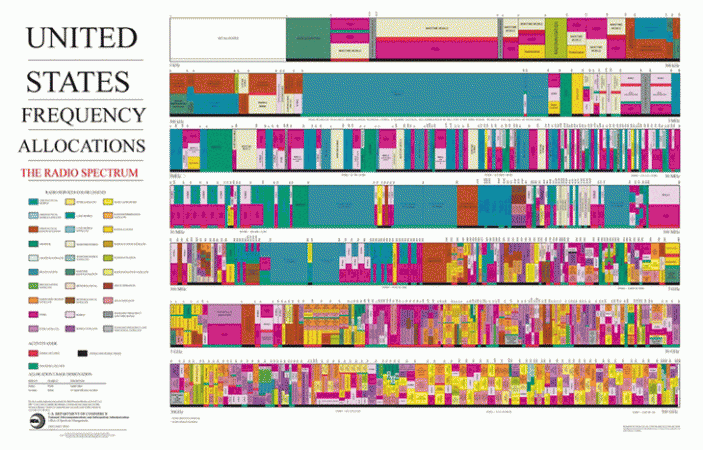
For a long time, dividing the radio spectrum like an enormous highway has worked. But now there’s a problem. More and more devices want to be on the road, and there are only so many lanes. In many places, the spectrum is so clogged that it’s like a real highway at rush hour.
Scientists need room on that overcrowded highway, too. Ransom and other astronomers tune in to radio waves from space. Other scientists use radio waves to study Earth’s surface. Some parts of the radio spectrum are very important to this work. So devices such as cell phones and Wi-Fi routers are supposed to steer clear of those lanes.
At times, though, signals accidentally stray from their assigned lanes. If two signals try to travel in the same lane at the same time, they may jostle each other. This causes a mixed-up signal. It’s a problem known as interference. It can ruin a scientist’s data. It has been causing problems for phone companies and militaries, too.
But it doesn’t have to be that way. In fact, a growing cadre of researchers are now at work. Their goal: developing a better way for everyone to share those radio highways.
Welcome to the quiet zone
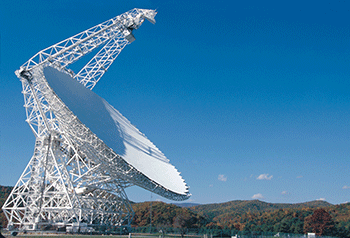
Astronomers build their telescopes in remote parts of the world. One reason is to get away from signals that may mess up their data. A lush valley in Green Bank, W.Va., is one such spot. It’s in a National Radio Quiet Zone. That means cell phones, Wi-Fi and other devices that send out radio waves aren’t allowed. People must use old-fashioned phones and computers that send signals through cables that plug into the wall.
In Green Bank, a set of telescopes collects radio waves from outer space. These signals help astronomers better understand the universe. The astronomers often listen for those signals using the parts of the spectrum reserved for science. But many of the objects they want to observe emit radio waves over much broader sections of the spectrum than have been reserved for them.
Ransom uses the Green Bank radio telescopes to study pulsars — collapsed stars that spin. He tunes in to thousands of wavelengths at once. It’s like listening to thousands of radio stations at the same time, he explains.
By the time signals from a distant pulsar reach Earth, they’re incredibly faint. The big, powerful telescopes at Green Bank can capture these signals. “They have the ability to listen to the tiniest little bits of energy,” says Ransom.
But a telescope sensitive enough to listen to a distant pulsar will also pick up any stray signal nearby. Despite the strict radio-quiet-zone rules, signals often sneak in. Electric fences are one common source, Ransom says. When a blade of grass touches the fence, it creates sparks and sends out a burst of radio waves. Spark plugs — devices inside cars that keep their engines running — cause a similar burst.
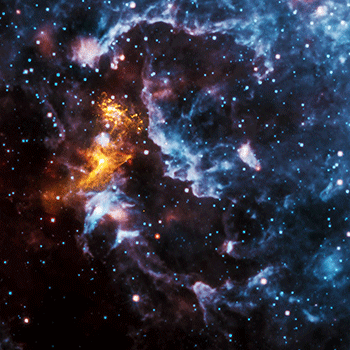
Plus, people don’t always obey the rules. Back in the early 2000s, Ransom was making some intriguing observations. “We were finding new pulsars, and I was super-excited,” he says. One morning, he looked at his data from the previous night and right away noticed a problem. “It was full of what was obviously Wi-Fi interference,” he says.
A few days later, Ransom went skiing with an engineer who had just started working at Green Bank. Ransom casually mentioned the incident. He explained that it had ruined a night’s data. “I could see him looking sheepish,” he recalls. It turned out that the engineer had secretly installed Wi-Fi at his house. When he got home, he turned it off.
But the problem has worsened with time. Now, Ransom’s group avoids trying to observe anything in the Wi-Fi part of the spectrum. Satellite radio — music and talk shows transmitted from satellites in space — is another big problem. The researchers now avoid this part of the radio spectrum, too.
Ransom loves his cell phone and welcomes self-driving cars. But he wants to make sure people design and use these devices “in a way that lets us do our science.”
Earth from above
Ransom listens for signals coming from space. Other scientists send instruments into space to observe natural signals coming from Earth. Heat radiates off the planet as waves of electromagnetic energy. Some of these waves are in the radio spectrum. Scientists use instruments aboard satellites to capture the waves. This helps them track temperatures, rainfall, sea ice and more.
But it’s not always easy to detect faint natural signals amid all the noise from our Wi-Fi electronics. “There’s no radio-quiet zone when looking over the whole Earth,” observes Priscilla Mohammed. She is an engineer at the NASA Goddard Space Flight Center in Greenbelt, Md. She works on a project called Soil Moisture Active Passive, or SMAP. A SMAP satellite measures how much water is in the soil everywhere on Earth. These data help scientists learn about the weather, Earth’s water cycle and climate change.
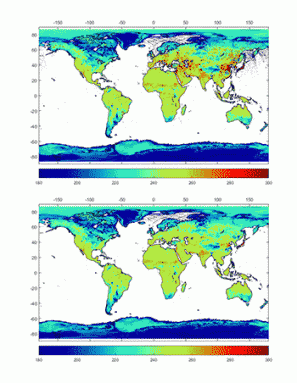
To help avoid interference, the SMAP team designed its mission to observe at a protected frequency. “Nobody is supposed to emit in that spectrum, globally,” says Mohammed. Still, people do. Some use the scientists’ special frequency illegally. Much of the rest of that interference is accidental. A device with a sloppy design, for instance, may leak radio waves into forbidden parts of the spectrum.
Researchers observing Earth try to identify sources of these illegal radio waves. Then they work with local governments to get them turned off. But there are too many sources for this approach to ever completely clear the air. “It’s a problem that’s not going to go away easily,” says Mohammed.
So she has taken another approach. She is cleaning up the satellite’s data. To do this, her team developed an algorithm (AAL-go-rith-um). It’s a set of instructions for a computer program to follow. Her team’s screens data for signs of interference. When it detects any, it attempts to remove the bad data.
This algorithm works. But in some places, almost no clean data remain. For example, strong interference from signals straying outside their lanes cloaks almost all of Japan. The culprit? A satellite-TV service that almost everyone in this country uses. “Their TV receiver boxes are leaky,” says Mohammed. They transmit signals at one frequency but leak radio energy at the scientists’ protected frequency. As a result, SMAP can’t capture much useful data about Japan’s soil.
Sharing the spectrum
Ransom avoids parts of the spectrum that are packed with interference. Mohammed found a way to clean up most of her messy data. But scientists aren’t the only ones frustrated by traffic on the radio highway.
Overcrowding and interference cause problems for everybody who wants to send or receive radio signals through the air. Companies such as AT&T or Verizon handle wireless signals for cell phones and other devices. These companies pay high prices for the right to use free bits of the spectrum. They also build dozens of tall towers that let everyone in a city use their cell phones at once. And militaries hire people to determine how to best use the radio spectrum during missions.

DARPA is very concerned about all of these problems. So this government agency organized a contest for engineers, called the Spectrum Collaboration Challenge. It is offering a $2 million prize to the team that comes up with the best way for devices to share the radio spectrum.
Teams will have to transmit information in the same part of the radio spectrum at the same time. And they will face obstacles. They might need to transmit from places that are very close together in space. This makes interference likely. Or they may all need to use a very skinny segment of the spectrum at the same time. That’s another recipe for interference.
Each team will earn points for getting its own messages through. But teams also will earn points if their opponents perform well. Those points reward devices that can work together automatically and smartly. The contest kicked off in 2017. It is scheduled to end in 2019.
Tilghman hopes DARPA’s contest will inspire new solutions. He thinks it’s time to get rid of radio-highway lanes altogether and create some new type of communications device. It should work together with other, nearby systems to divide up the radio spectrum. He envisions a device that would not stick to just one frequency. Rather, it would move around the spectrum, sending out signals in whatever lane has little to no traffic.
To make this work, Tilghman explains, the devices will “need to share information. They need to collaborate.” If all cars on a highway coordinate, they won’t need lanes or traffic signals. They can confer to decide which car should travel where. Self-driving cars may someday do this. And perhaps other devices will share the invisible radio spectrum in much the same way.
But what about radio astronomy and Earth observation? Devices that skip all around might be even more likely to jump into a lane that a researcher is trying to use. These devices might also make it trickier to identify who was responsible for interference. Right now, Ransom knows to expect Wi-Fi signals at a certain frequency. But if devices start hopping between frequencies, it will all become less predictable, he notes.
The sharing challenge
Tilghman understands these concerns. One solution, he says, is to keep protected parts of the radio spectrum off-limits to outsiders. “We don’t want to pollute those frequencies,” he says. In addition, scientists could join the Spectrum Collaboration. They also could add “smart” systems to their telescopes and satellites. Such instruments could then stick up for themselves. When a sneaky engineer switched on secret Wi-Fi, the telescope could say, “Hey, don’t use these frequencies! I’m listening to them right now.” The Wi-Fi system could then try to pick a frequency that doesn’t interrupt observations — making astronomers’ work a little easier.
Still, if an astronomer is trying to observe over a wide span of the radio spectrum, it may not be possible for any Wi-Fi to be used nearby. So radio-silence zones might still be needed.
No matter what happens, the current approach to sharing the spectrum likely won’t work for much longer. People’s demand for radio devices is growing each year. Working together may be the only way to pack more traffic into a crowded radio spectrum. That means you’ll be able to have your phone and your virtual reality while saving enough space for scientists to do their work.







